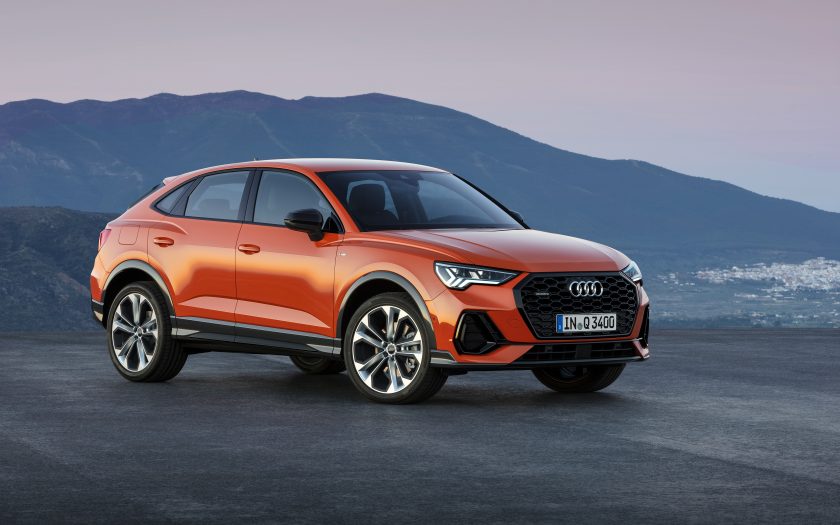FURTHER BLURRING THE LINES between models, Audi is adding a compact SUV with coupé styling to its model range with the Audi Q3 Sportback. The new model combines the convenience of an SUV with the sporty elegance of a coupé. This makes it the first compact crossover of the Audi brand.
Low roofline, muscular body
The black grille is strongly three-dimensional in design, as are the trapezoidal air inlets and bumper with its flat blade. The coupé-like cabin acts as a contrast to the distinctive attachments, which are painted in contrasting colours and emphasise the SUV character. The low roofline gives way to flat D-pillars and ends in a roof edge spoiler. As a result, the Audi Q3 Sportback appears much longer than its sister model Q3. In addition, the SUV-coupé is almost three centimetres flatter, and thus has a more muscular appearance. Above the wheels, strong contours draw attention to the quattro drive, which comes as standard with most engines. The low window, flanked by aero trims and the sporty bumper emphasise the width of the Audi Q3 Sportback. The reversing lights contribute to this as well, running inwards in a tapered shape, just like the flat headlights. Audi supplies the latter in three versions up to Matrix LED technology, whose adaptive high beam intelligently illuminates the road as best suits the driving situation.
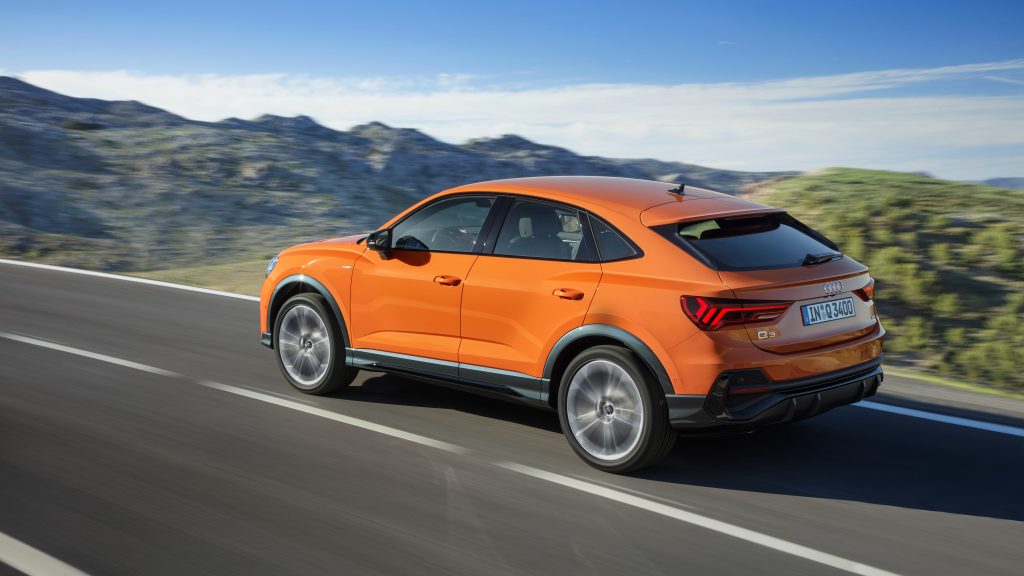
Very un-SUV-like on the road
The Audi Q3 Sportback offers engaging driving on various terrains from the city, on long-haul routes, or on easy terrain. It features progressive steering as standard, becoming increasingly direct as the steering angle increases.
Optionally, the suspension is available with damper control, which further increases the range between dynamism and comfort. Depending on the driving situation, road condition and personal preferences, the driver can vary the car’s characteristics via the standard dynamic handling system, Audi drive select, in six profiles, including the offroad mode. In addition to the engine and transmission set-up, this system also influences the electronically adjustable shock absorbers and the steering assistance. Also an option, the hill descent control keeps the speed selected by the driver constant on an incline greater than six percent.
TFSI, TDI, S tronic, quattro: the drive
For the market launch in Europe, both petrol and diesel engines are available. With 169kW, the 2.0 TFSI in the Audi Q3 Sportback 45 TFSI quattro S tronic is the most powerful engine. The 2.0 TDI in the Audi Q3 Sportback 35 TDI S tronic has an output of 110kW. Shortly after market launch, it will also be available as a manual transmission with a quattro drive. Additional engines will follow over the course of the year, including a more powerful diesel and an entry-level petrol engine, which works together with a 48 V mild-hybrid system. During deceleration, it recovers energy; during acceleration from low speeds, it supports the engine. In real-life driving, it can save up to 0.4 litres of fuel per 100km.
In the top engines, the quattro all-wheel drive is standard – its central component a hydraulic multi-plate clutch on the rear axle. Its electronic management combines outstanding stability and strong traction with a high level of driving enjoyment. At the limits of performance, the quattro drive works closely with the wheel-selective torque control. It makes handling even more dynamic and stable by means of gentle brake interventions on the inside wheels with the quattro drive and the inside front wheel with the front drive.
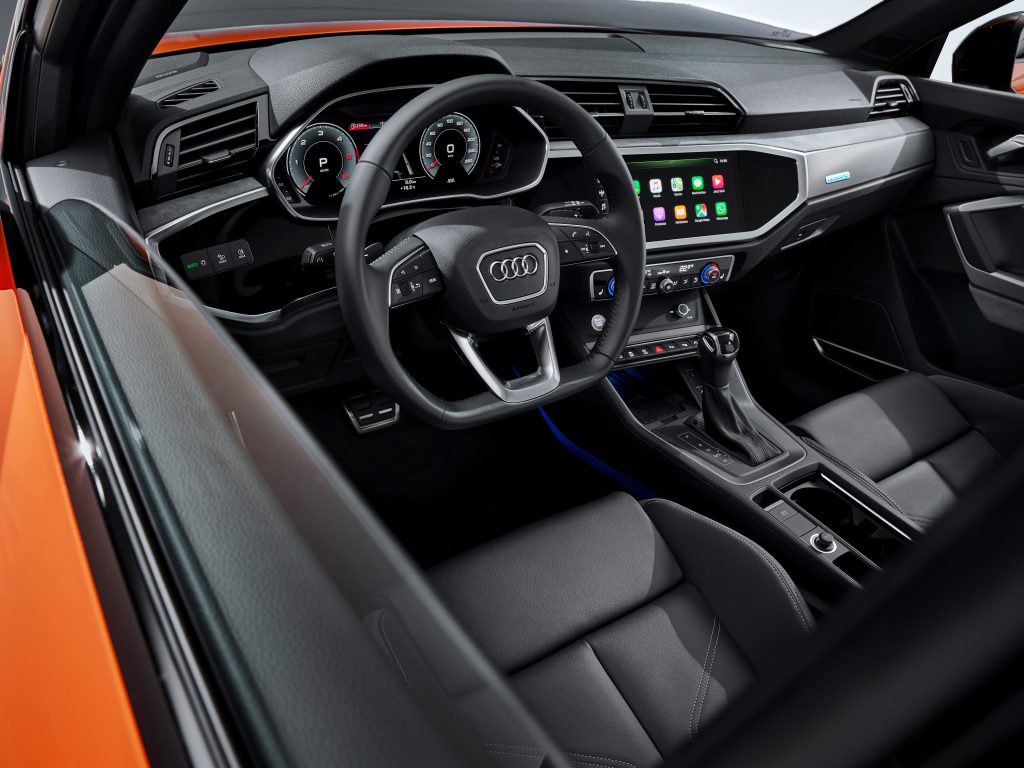
Variable comfort: Interior and space concept
The Audi Q3 Sportback is 4500mm long, 1840mm wide and 1560mm high, its wheelbase measuring 2680mm. The rear seats offer space for three people and can be moved 130mm longitudinally as standard. Their backrests are divided into three sections and inclination can be adjusted in seven stages. The volume of the luggage compartment ranges from 530 litres (seats up) to 1400 litres (seats lowered). The loading floor can be adjusted to two levels and the rear shelf is located beneath it. As an option, Audi will deliver an electric tailgate that can also be opened and closed with a foot motion. The front seats – optionally electrically adjustable and heated – offer a sporty position and a high level of comfort. Depending on the specification, there are sport seats with contrasting stitching and coloured stripes along the side panels.
In addition, Alcantara surfaces on the instrument panel and the armrests emphasise the progressive design philosophy. In the dark, the optional contour/ambient lighting package sets lighting accents with its 30 selectable colours.
Digital displays and operation
Even the basic equipment includes a digital instrument cluster with a 10.25-inch screen diagonal, which the driver operates using the multifunction steering wheel. In the top-of-the-line system, MMI navigation plus, the displays appear in the Audi virtual cockpit, which offers many additional functions. A touch display measuring 10.1 inches is positioned in the centre of the instrument panel. When a function is selected, it emits acoustic feedback. Together with the air-conditioning control unit located beneath it, the display is ergonomically tilted 10 degrees towards the driver. Optional is the 12.3-inch Audi virtual cockpit plus, available with three selectable layouts, including a dynamic view.
The flat menu structure is complemented by a control unit that uses natural language and understands everyday speech, so we are told. Navigation destinations entered into the MMI search are based on free text input, with the system recognising the driver’s most frequent destinations based on previous journeys, allowing it to generate suitable suggestions. When doing so, it takes into consideration statistical empirical values regarding the traffic load and time of day.
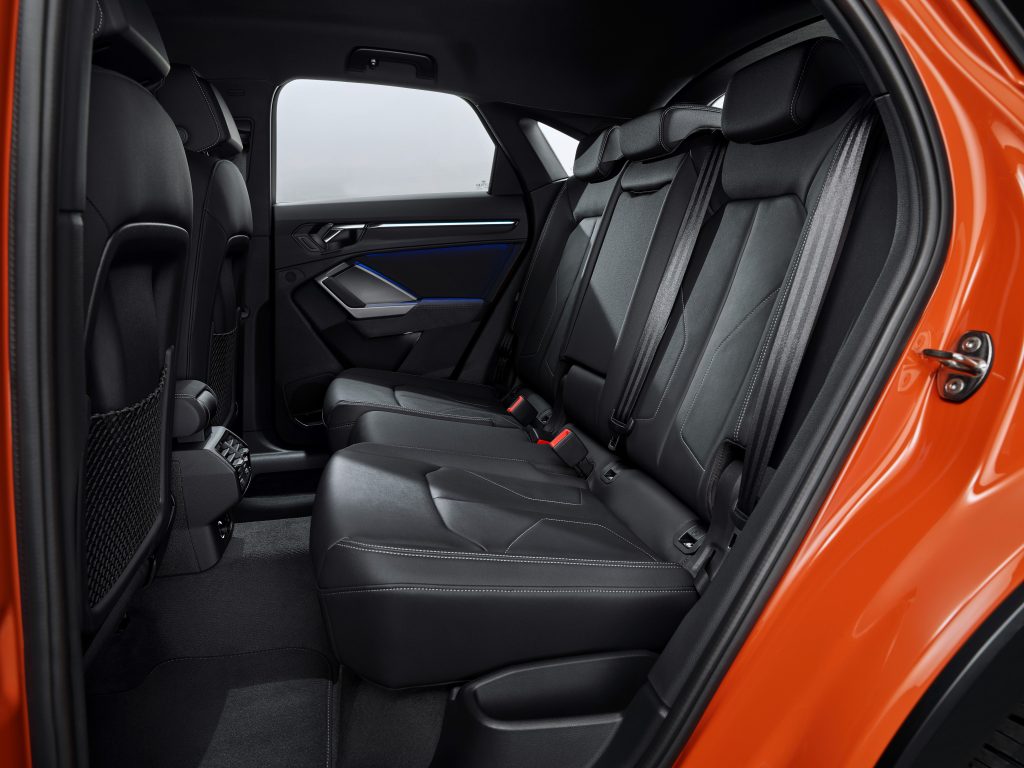
Infotainment and Audi connect
Together with MMI navigation plus, the online services of Audi connect are made available on board at LTE Advanced speed via a permanently installed SIM card. This includes, for example, online traffic information and the online points of interest service, which complements route guidance with photos, opening hours, and user evaluations. Thanks to the inter-connectivity of the Audi fleet, the Q3 Sportback receives and provides information about parking spaces on the roadside, hazard areas and speed limits, which are detected via the on-board camera and vehicle sensors. Traffic light information is a new feature among the Car-to-X services, where the car receives data from a city’s traffic computer, giving the driver information about traffic light phases in the Audi virtual cockpit. This allows drivers to adjust their speed pre-emptively, which increases efficiency and improves traffic flow. This offering is initially available in individual European cities and will be gradually extended depending on the infrastructure in the urban area. As we have noted before, there is no indication when this technology will become available in Australia.
Another new feature is the cloud-based Amazon voice service Alexa, which streams music and audio books and offers access to more than 80,000 Alexa Skills. Navigation with Google Earth and the hybrid radio, which automatically switches between FM, DAB and online streaming depending on the reception conditions, also forms part of the Audi connect navigation and infotainment plus package. The voice control system uses the detailed knowledge in the cloud to answer the driver’s questions and commands.
The free myAudi App and the Audi smartphone interface ensure interconnectivity between the car and smartphone. This integrates Android and iOS smartphones into the on-board infotainment system. The content of the smartphone is shown in the MMI display via Apple CarPlay or Android Auto, and no cables are required if the top infotainment system is used with an iPhone. The Audi phone box and the Bang & Olufsen Premium Sound System with virtual 3D complete the package.
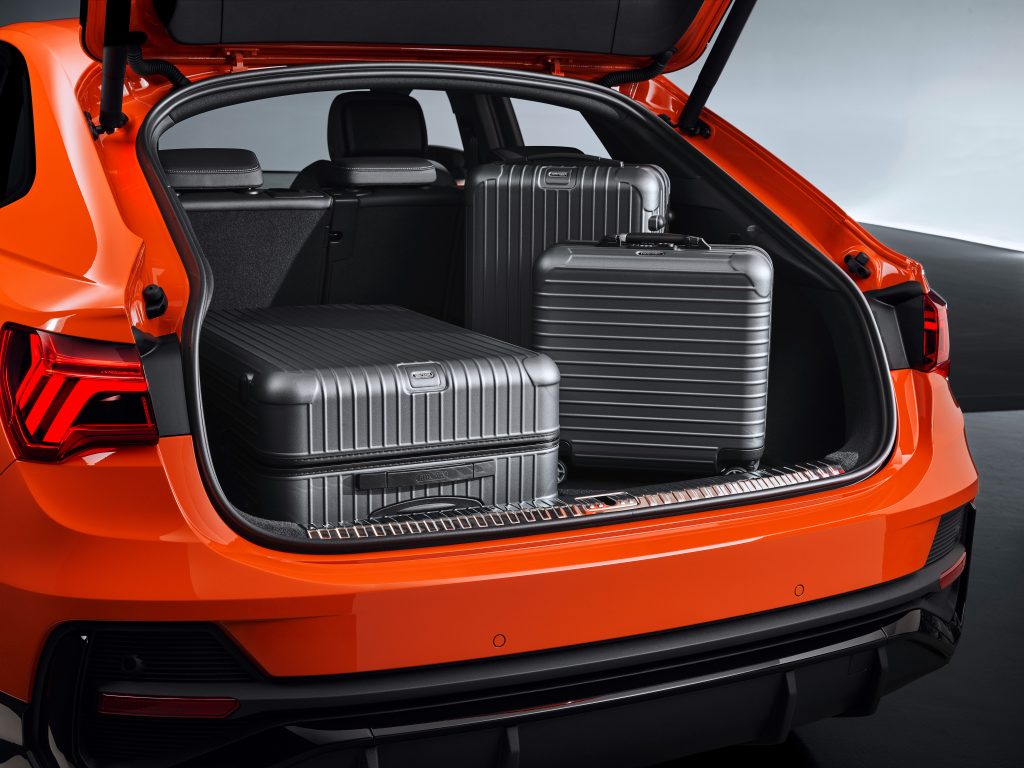
Multiple assist systems
In the Audi Q3 Sportback, four standard systems are used for safety. These include the lane departure warning and the lane change warning. The former helps the driver to remain in the lane, while the latter points out critical situations when changing lanes, such as if there is a vehicle in the blind spot. The series scope in Germany also includes Audi pre sense front. If a head-on collision is imminent, it outputs a visual, acoustic, and haptic warning to the driver. In an emergency, it causes full braking and initiates the Audi pre sense basic safety measures. This involves tightening the front seat belts, closing the windows and the optional sliding roof, and activating the hazard warning lights.
The adaptive cruise assist is a highlight of the optional systems, taking the burden off the driver during longitudinal and lateral guidance. Ultra-modern systems such as the 360-degree cameras offer assistance with parking and manoeuvring. They show the direct surroundings of the SUV coupé on the MMI display, and the driver can choose from several perspectives. The park assist automatically guides the car into and out of parking spaces. If, for example, the driver wants to back out of an entrance, the rear cross traffic assist warns about approaching vehicles that the system classifies as critical,
Australian information
The all-new Audi Q3 Sportback is expected to arrive in Australia in the first-half of 2020. Further details on the model line-up, pricing and specification will be announced closer to launch.
Once we have tested and assessed the new Audi Q3 Sportback, seniordriveraus will bring you a comprehensive review, including everything the over-50 driver needs to know.
